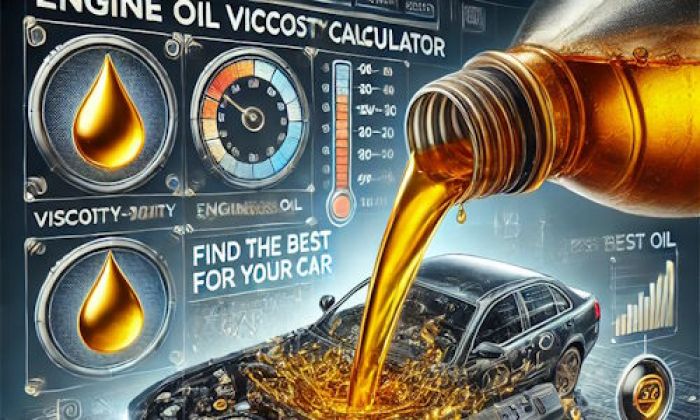The Cummins diesel engines are pretty cool in terms of high quality, durability, wonderful torque, and also good gas mileage. But when we are talking about a certain unit, we want to know all the bad sides of it to be ready for them if some problems happen. That's why, today, we'll focus on one of the main problems of the Cummins 6.7 engine - the head gasket failure and its symptoms.
Key features and my opinion about the engine
- Production years:2007-now
- Average lifespan of 6.7 Cummins:350,000-500,000 miles
- Fuel supply type:Common Rail
- Power range:150-420 hp
- Fuel efficiency:bad
- Engine block material:cast iron
- Engine reliability score:high
- The most common problems:fuel supply issues, head gasket failure, turbocharger problems.

6.7 Cummins - good or bad engines?
It's always hard to say for sure if an engine is good or bad, so let's look at some of the most important factors. The 6.7 Cummins has been produced since 2007. The engine was initially made for the RAM light-duty trucks and it was also used in school buses.
The engine is one of the largest straight-six diesel engines in America. It has different versions with the power from 150 to 400 horsepower. Torque may be up to 1000 lb-ft. The engine is turbocharged.
Here are some facts you should know about it:
- the engine is pretty durable and reliable, most owners say only good things about the unit;
- it has been used for RAM 2500/3500 most of its time, and in these cars you'll find it easily;
- the gas mileage is 15 mpg combined, it's not very bad for a big-capacity engine;
- the engine is made to tow weights, so torque is more important than power here;
- like all Cummins engines, this one is practical, the construction is pretty simple for maintenance and repair;
- it's not expensive to run this engine compared to many other alternatives on the market;
- a surprising straight position of cylinders gives some vibration, but in a RAM truck, it feels OK.
Well, the engine is not the most technological in the class. It's just a simple turbocharged diesel engine that is made for a truck and is used for different private and commercial tasks. We wouldn't say the engine is ready for heavy-duty use, but it's not that bad in terms of reliability, anyway.
Of course, if you start looking closer and asking owners about the problems of the Cummins 6.7, they will tell you much more than you expect to hear. And one of the main problems will probably be the head gasket failure. Why? Because it's not so cheap to deal with.
What's the longevity of the 6.7 Cummins?
The big Cummins diesel engine can go about 300,000 miles. We've seen trucks equipped with this engine that had over 400,000 miles on the clock and the engine was still running like new. This is a very good result even if you compare it with the best truck engines ever made in the US.
But longevity depends much on how you maintain this engine and how you repair it. It's enough to drive your truck with a blown head gasket for a while to find this engine completely broken. So, let's look at this problem and see what you can do to avoid it.
6.7 Cummins head gasket failure symptoms
You should know about one of the common problems with this engine - the head gasket failure. The high compression of the diesel engine and big loads often lead to head gasket problems that are hard to predict. The gasket just gets a hole in the wrong place and the liquids in your engine get mixed.
This is a very bad incident because you won't feel this right at the moment when it happens. And then it may be too late because the mixing liquids will do their job and affect the engine.
Here are some symptoms you should always pay attention to:
- White smoke from the exhaust pipe. Very often, antifreeze gets to the combustion chamber and starts burning. This leads to white smoke which is hard to overlook.
- The higher temperature of the engine. Antifreeze can get mixed with oil and this will lead to a worse heat exchange reaction. Sometimes, a blown head gasket in your Cummins 6.7 may result in an overheating engine.
- Oil film in the coolant reservoir. Just look sometimes inside the antifreeze reservoir in your truck and check whether there is no oil film. Antifreeze should be clean and bright. See the film? Your Cummins has problems with the head gasket.
- Coolant level drops. You see no leaks under the vehicle, but the coolant keeps disappearing. This is one more important sign that the head gasket is blown and needs replacement.
- White foam in oil. Check the oil with the dipstick and see whether the oil is clean and brown or black. If you see that it's white, you may be sure that the antifreeze is there, in your oil.
- Huge leaks on your engine. Sometimes, head gaskets are blown in such a way that the liquids don't mix, but they get outside and make your engine block dirty.
Once you see any of these symptoms, you should stop driving your vehicle. Just stop the engine and don't start it until you come to the repair shop. Driving the truck with such problems may lead to very quick wear of the engine. It will be just broken and you will need to repair the block or the head instead of just replacing the gasket.
Why can a head gasket be broken in a Cummins?
The first reason is actually the age and mileage. These engines are durable, but somewhere in the middle of their lifespan, they can have a blown head gasket. If you replace it on time, you will be able to drive the engine for some more miles. If not, you'll have to repair the engine.
Also, the head gasket could have been blown because of overheating. The head changes its geometry when overheated and it can just press the gasket out and make some holes in it.
Also, if you have already repaired the engine, the head gasket could be installed in the wrong way. For example, the head bolts were tightened too much and the gasket was broken because of this.
Detonation and bad ignition could also be the reasons. If your engine detonates often, this causes more risks for its components including the head gasket. And it can be just broken.
What will happen if I keep driving a truck with a blown head gasket?
Your Cummins 6.7 will not forgive you if you keep driving it with a blown head gasket. One of the lightest consequences is the full repair including piston rings, valve seals, root bearings, etc. Also, you'll have to clean the system very carefully to avoid problems with cooling and oiling. This will take some time and cost some money.
But the consequences can be even worse:
- a blocked engine because of poor oiling - root bearing or even crankshaft can be broken;
- fatal overheating and head problems - valves can get damaged much in this case;
- cylinders can be scratched because they will not get proper oiling and this is a big problem;
- the turbocharger will probably be broken once it gets the mixture of oil and coolant instead of pure oil;
- the exhaust system will be clogged, especially, the catalytic converter may just die;
- anything can happen in the end, including the complete death of your engine.
Just look at these consequences and think twice before you start the 6.7 Cummins engine with a blown head gasket. Calling a tow truck is much cheaper, in this case. Never let inexperienced mechanics deal with your Cummins engine (and any other engine, too) because they will make it even worse. You will spend some money and the truck will be broken again very soon.
Final words
You should be ready to see a blown head gasket on your Cummins 6.7. It can happen between 100,000 and 150,000 miles or it can even happen earlier if there is a certain situation like overheating or something. Never drive your truck with a blown head gasket because it can lead to even worse damage to your engine.
Also, you should know that the price for replacing the head gasket in the Cummins engine will not be very low. Thank goodness, it has one head (because it's not a V6 but a straight-6), but anyway, the price for labor and parts will be quite high.
About the authors
The CarAraC research team is composed of seasoned auto mechanics and automotive industry professionals, including individuals with advanced degrees and certifications in their field. Our team members boast prestigious credentials, reflecting their extensive knowledge and skills. These qualifications include: IMI: Institute of the Motor Industry, ASE-Certified Master Automobile Technicians; Coventry University, Graduate of MA in Automotive Journalism; Politecnico di Torino, Italy, MS Automotive Engineering; Ss. Cyril and Methodius University in Skopje, Mechanical University in Skopje; TOC Automotive College; DHA Suffa University, Department of Mechanical Engineering






Add comment